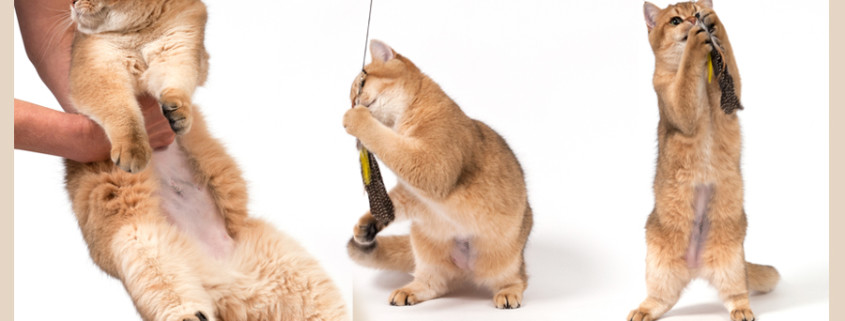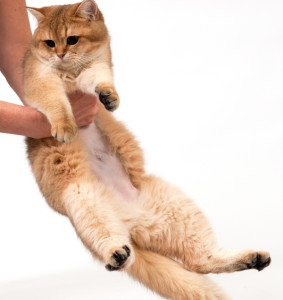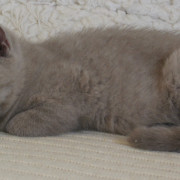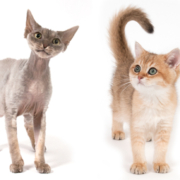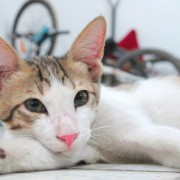Castration and sterilisation
Unfortunately there has always been a lot of prejudice surrounding this topic, and it persists to this day:
– That cats change their character after castration.
– That castrated animals become fat and lazy.
Both are definitely not the case. Females that are not spayed can be in heat again within a short period of time. The female cat rolls around on the floor cooing and crying to attract a male / tomcat. In this condition the animal, which cannot live out its sexual drive, suffers greatly. Just as the nerves of the other inhabitants are surely strained by this as well. This so-called permanent heat also harbours certain health risks, such as pyometra (infected uterus) or mammary gland tumours (breast cancer).
With tomcats the problem manifests slightly differently. Sexually mature male ctas mark the territory with foul-smelling urine, which means you may want to have it neutered for your own sake. A side note for your information: Castration is a term used for both male and female cats. By castration we mean the removal of the testes in the male cat and the ovaries in the female. Sterilisation results only in the male and female cat’s infertility. As such sterilisation does not solve the above-mentioned problems of sexually mature male and female cats.
Now this raises the question about when is the best time for castration. Since the cat’s development is controlled by hormones to a certain extent, many experienced breeders recommend awaiting sexually maturity. With female cats this is around 8-10 months, with males about 9-12 months. These days some vets recommend castration during the first six months because the young animal is better at coping with the surgery.

